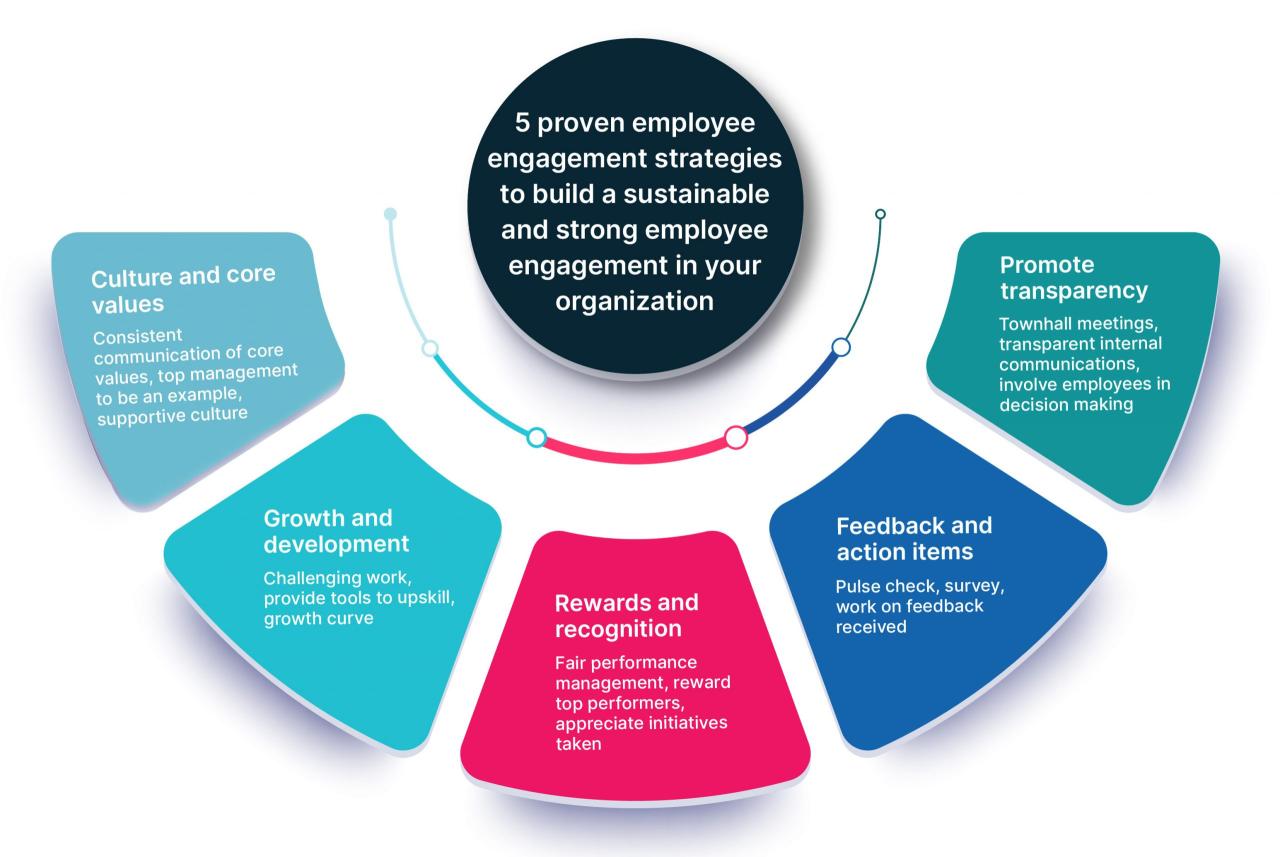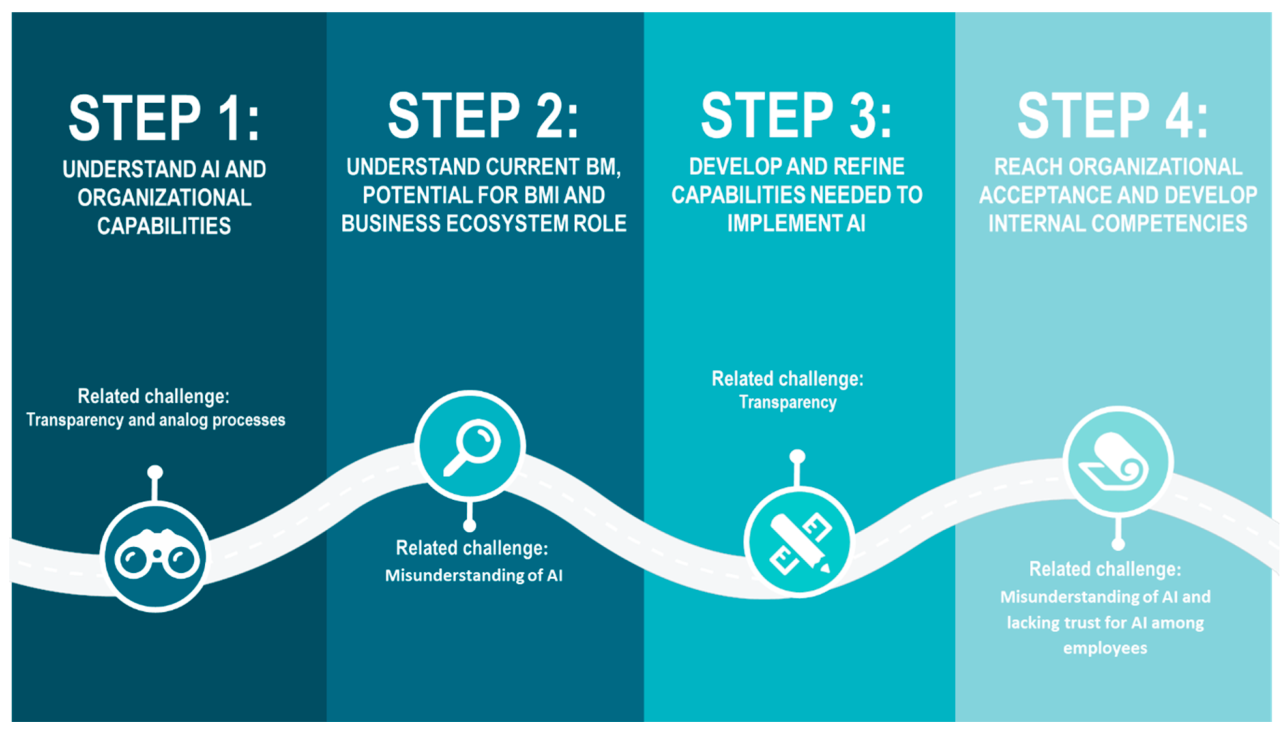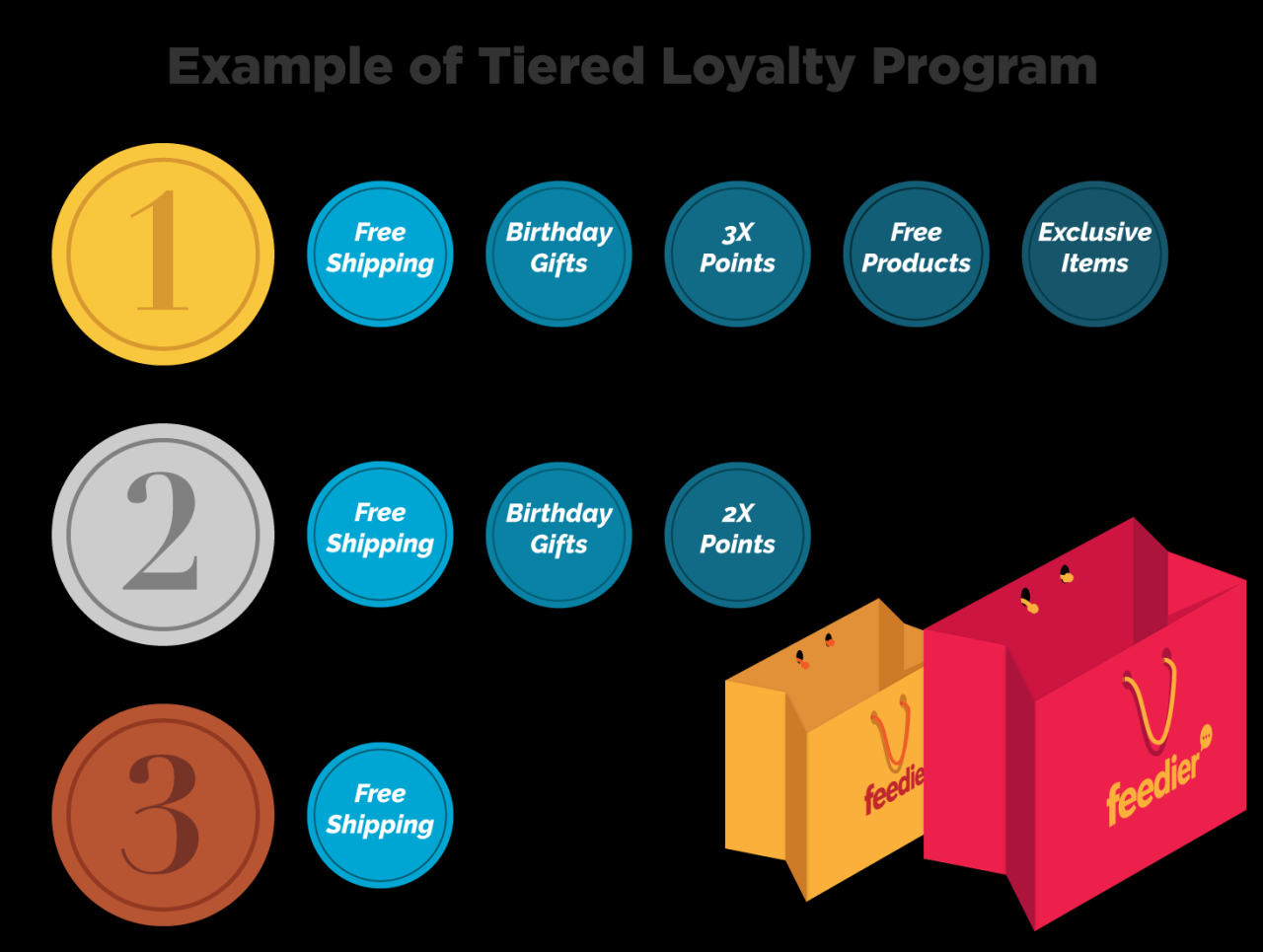Employee Engagement Strategies
Employee engagement strategies are essential for businesses seeking to create a thriving and productive work environment. By implementing effective employee engagement programs, organizations can reap numerous benefits, including increased employee satisfaction, productivity, and profitability. This comprehensive guide explores the key elements of successful employee engagement strategies and provides practical guidance on their implementation.
Employee engagement is a strategic approach that focuses on creating a positive and motivating work environment where employees feel valued, respected, and empowered. It involves a range of initiatives and practices designed to enhance employee satisfaction, commitment, and performance.
Employee Engagement Strategies

Employee engagement strategies are designed to foster a positive and productive work environment where employees are motivated and committed to their roles. These strategies aim to create a workplace where employees feel valued, supported, and empowered to contribute to the organization’s success. By implementing effective employee engagement strategies, organizations can reap numerous benefits, including increased productivity, improved employee retention, enhanced customer satisfaction, and a stronger overall organizational culture.
Key Elements of Successful Employee Engagement Programs
Effective employee engagement programs typically encompass several key elements:
- Clear communication: Open and transparent communication channels are essential for fostering employee engagement. Regular communication from leadership, feedback opportunities, and opportunities for employee input help create a sense of trust and belonging.
- Recognition and rewards: Acknowledging and rewarding employee contributions, both big and small, is crucial for motivation and morale. Recognition can come in various forms, such as verbal praise, written acknowledgements, or monetary rewards.
- Professional development: Providing opportunities for employees to develop their skills and knowledge is essential for employee engagement. This can include formal training programs, on-the-job learning, or mentorship programs.
- Employee involvement: Giving employees a voice in decision-making and involving them in shaping the workplace can foster a sense of ownership and engagement. This can be achieved through employee surveys, focus groups, or team-based problem-solving.
- Empowerment: Empowering employees to make decisions and take ownership of their work can increase motivation and engagement. This involves providing employees with the authority and resources they need to succeed.
Types of Employee Engagement Strategies
Employee engagement strategies encompass a diverse range of approaches designed to enhance employee satisfaction, motivation, and commitment. Organizations can choose from various types of strategies based on their specific needs and goals.
Recognition and Rewards
Recognition programs acknowledge and reward employee contributions, fostering a sense of appreciation and value. Rewards can be monetary, non-monetary, or a combination of both.
Employee Development
Providing opportunities for employee development, such as training, coaching, and mentoring, demonstrates the organization’s investment in their growth and well-being.
Communication and Transparency
Open and transparent communication channels promote trust and a sense of belonging. Employees who feel informed and valued are more likely to be engaged.
Work-Life Balance
Flexible work arrangements, employee assistance programs, and other initiatives that support work-life balance contribute to employee well-being and reduce burnout.
Empowerment and Autonomy
Giving employees autonomy and decision-making power increases their sense of ownership and responsibility, leading to higher engagement.
Company Culture
Creating a positive and inclusive company culture where employees feel valued, respected, and connected fosters a sense of community and belonging.
Pros and Cons of Different Employee Engagement Strategies
The effectiveness of an employee engagement strategy depends on its alignment with the organization’s goals and culture. While some strategies may yield positive results in one context, they may not be suitable in another. It’s crucial to evaluate the pros and cons of each strategy before implementation.
Implementing Employee Engagement Strategies
Implementing employee engagement strategies requires careful planning and execution. Here’s a step-by-step guide to help you get started:
Step 1: Assess the Current State
Evaluate your organization’s current level of employee engagement. Gather data through surveys, interviews, and focus groups to identify areas for improvement.
Step 2: Define Goals and Objectives
Establish clear goals and objectives for your employee engagement strategy. Align these goals with your organization’s overall business objectives.
Step 3: Develop and Implement Initiatives
Create a comprehensive plan outlining the specific initiatives you will implement to improve employee engagement. These initiatives should be tailored to the needs of your organization and employees.
Step 4: Communicate and Engage
Communicate your employee engagement strategy to all employees. Explain the rationale behind the initiatives and how they will benefit employees and the organization.
Step 5: Monitor and Evaluate
Regularly monitor the progress of your employee engagement strategy. Use metrics to track key indicators and make adjustments as needed.
Challenges and Obstacles
Implementing employee engagement strategies can present challenges and obstacles. These may include:
– Lack of leadership commitment
– Limited resources
– Resistance to change
– Lack of employee participation
Tips for Successful Implementation
– Secure buy-in from top management
– Involve employees in the planning and implementation process
– Create a culture of open communication and feedback
– Provide regular recognition and rewards for employee contributions
– Be patient and persistent
Measuring the Effectiveness of Employee Engagement Strategies
Measuring the effectiveness of employee engagement strategies is crucial for organizations to assess the impact of their initiatives and make necessary adjustments. By tracking key metrics and indicators, businesses can evaluate the success of their engagement programs and identify areas for improvement.
Key Metrics and Indicators
- Employee Satisfaction: Surveys, focus groups, and feedback mechanisms can measure employee satisfaction levels and identify areas where engagement can be enhanced.
- Employee Engagement Scores: Standardized surveys specifically designed to measure employee engagement provide a comprehensive assessment of employee commitment, motivation, and satisfaction.
- Retention Rates: High employee retention rates indicate a positive and engaging work environment where employees are valued and motivated to stay.
- Productivity and Performance: Engaged employees are more productive and perform better, leading to increased profitability and organizational success.
- Customer Satisfaction: Engaged employees provide better customer service and contribute to overall customer satisfaction, which can drive revenue and growth.
Methods for Collecting and Analyzing Data
Various methods can be used to collect and analyze employee engagement data, including:
- Surveys: Online or paper-based surveys allow organizations to gather quantitative and qualitative feedback from a large number of employees.
- Focus Groups: Facilitated discussions with small groups of employees provide in-depth insights into their experiences and perspectives.
- Interviews: One-on-one interviews with employees enable HR professionals or managers to gain a deeper understanding of individual motivations and engagement levels.
- Data Analysis: HR teams can analyze data from employee performance reviews, attendance records, and other sources to identify trends and patterns related to engagement.
Case Studies and Examples: Employee Engagement Strategies
Real-world case studies and examples illustrate the successful implementation of employee engagement strategies and their positive impact on organizations.
Google’s Project Aristotle
Google conducted a comprehensive study to identify the key factors that drive employee engagement. The study, known as Project Aristotle, found that the most important factors are: psychological safety, dependability, structure and clarity, meaning of work, and impact of work.
Zappos’ Culture of Happiness, Employee engagement strategies
Zappos is renowned for its exceptional employee engagement and customer service. The company’s unique culture, which emphasizes happiness and empowerment, has contributed to its high levels of employee satisfaction and customer loyalty.
Results and Outcomes
Successful employee engagement strategies have led to significant improvements in various organizational metrics, including:
- Increased productivity and innovation
- Improved customer satisfaction and loyalty
- Reduced turnover and absenteeism
- Enhanced employee well-being and job satisfaction
Popular Questions
What are the key elements of successful employee engagement strategies?
Successful employee engagement strategies typically include elements such as clear communication, recognition and rewards, professional development opportunities, and a positive and inclusive work environment.
How can organizations measure the effectiveness of their employee engagement strategies?
Organizations can measure the effectiveness of their employee engagement strategies through metrics such as employee satisfaction surveys, performance reviews, and employee turnover rates.
What are some common challenges in implementing employee engagement strategies?
Some common challenges in implementing employee engagement strategies include lack of leadership commitment, limited resources, and resistance to change.







